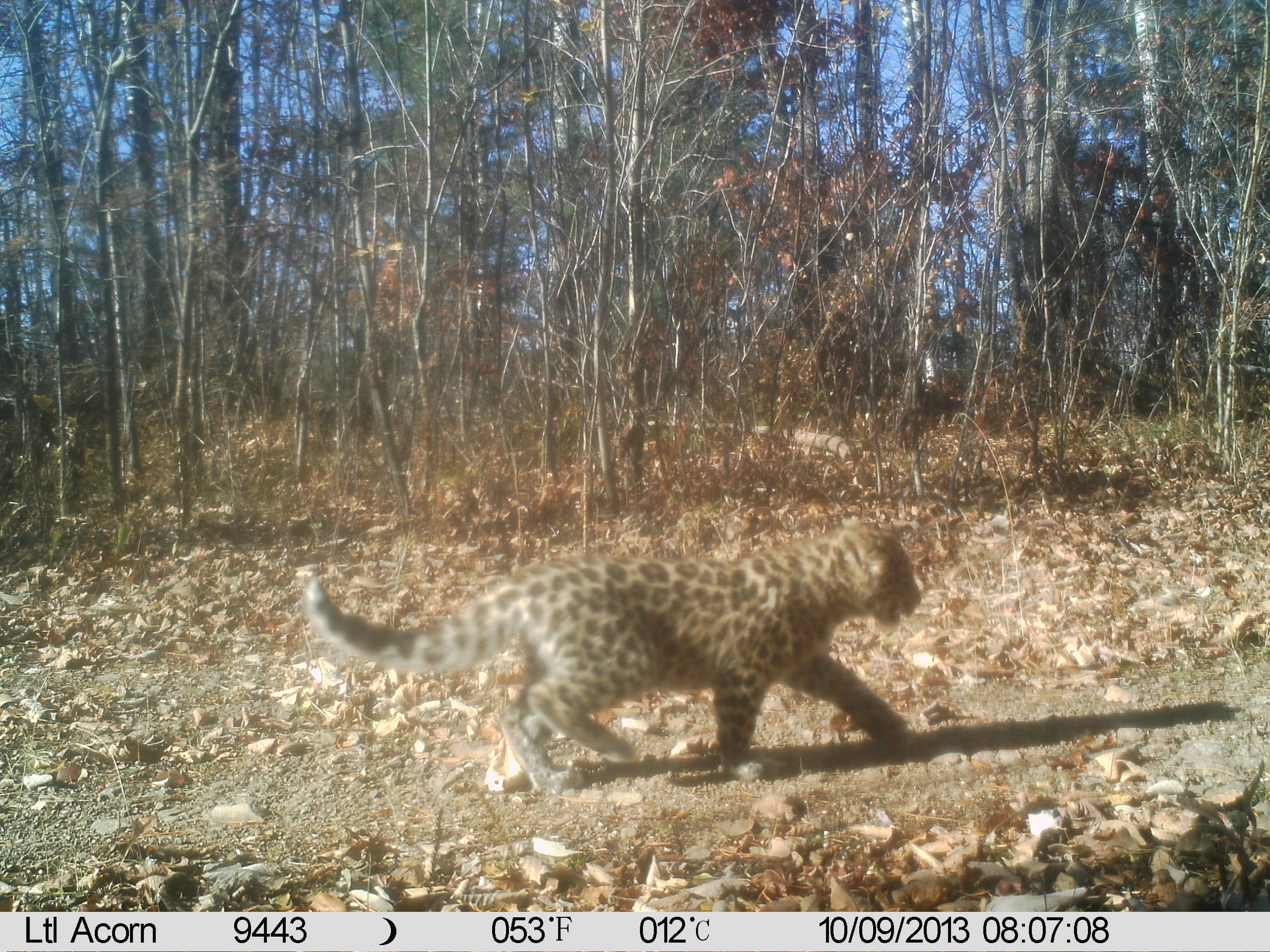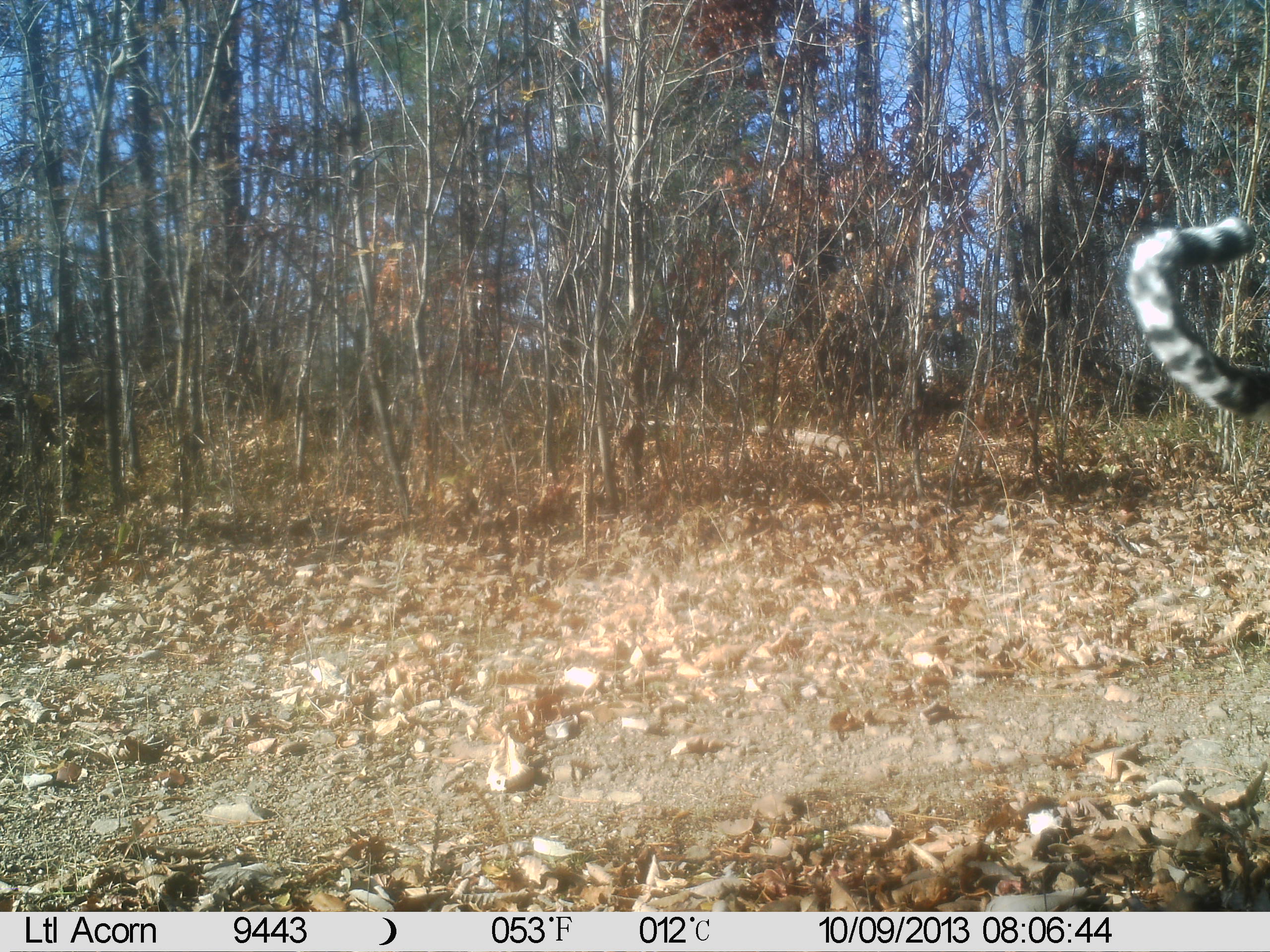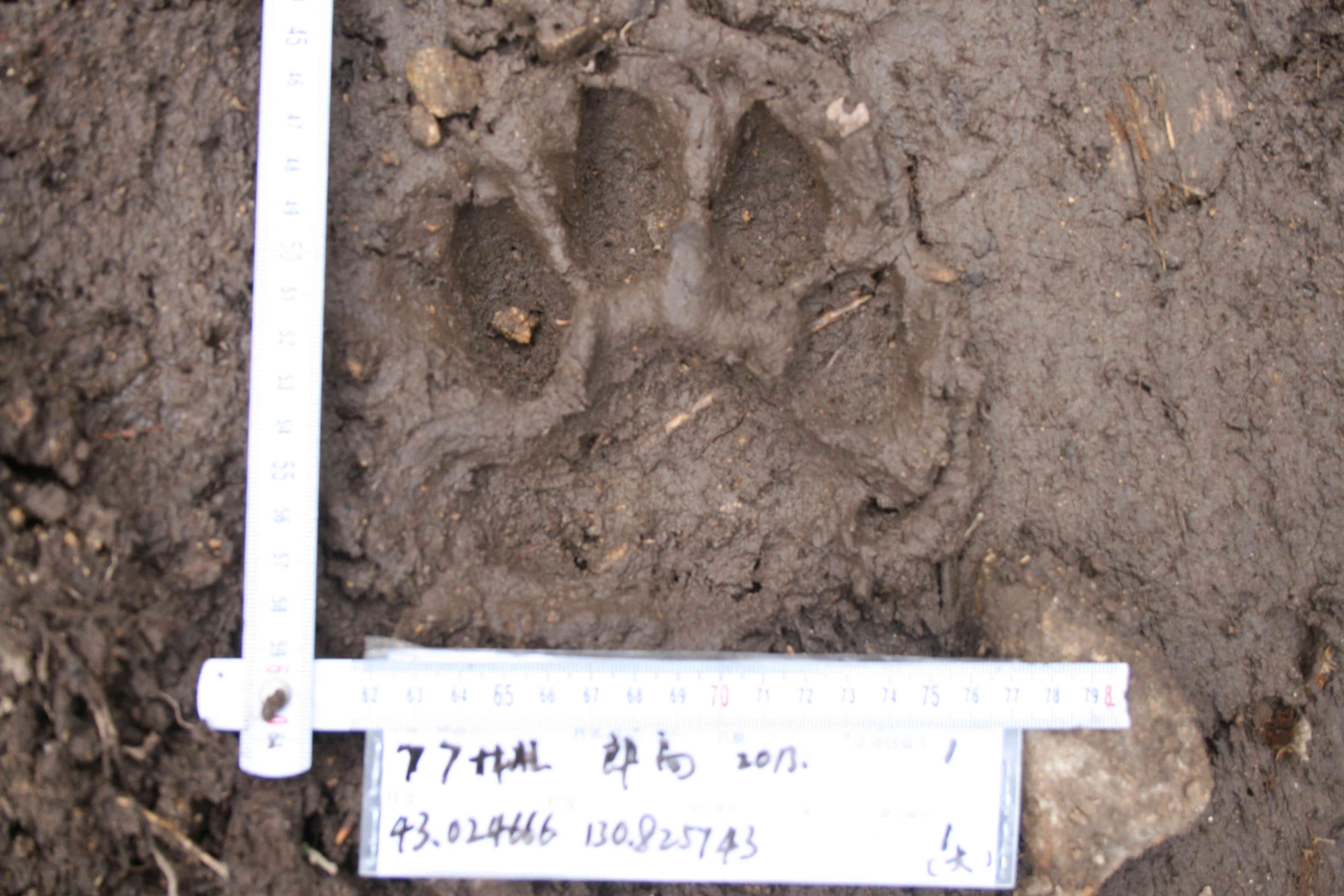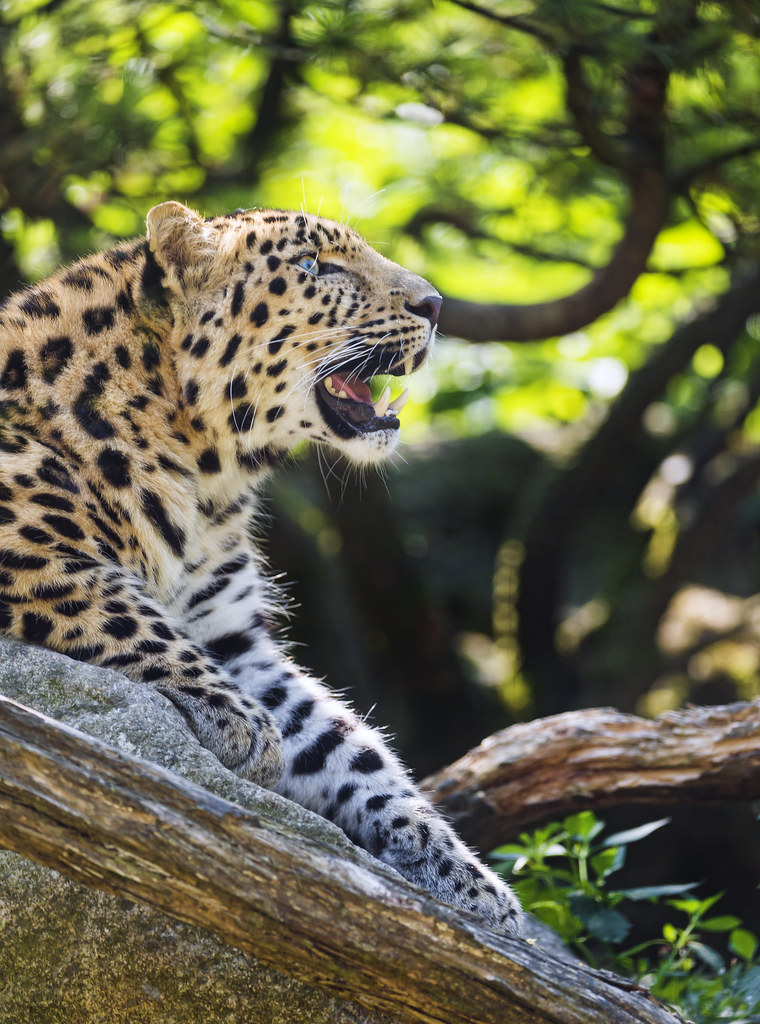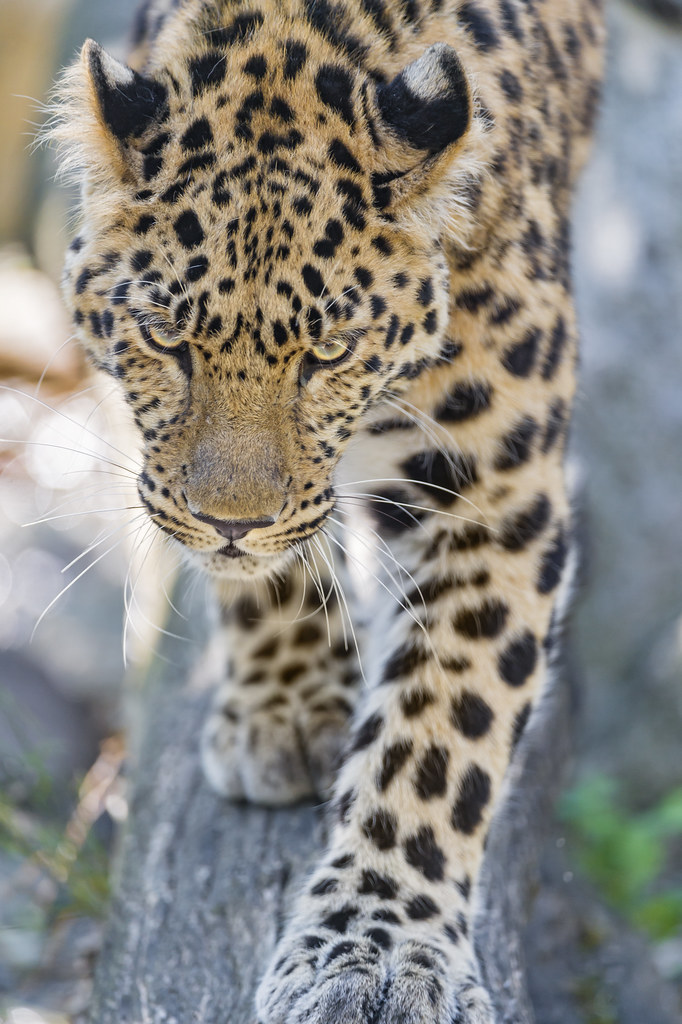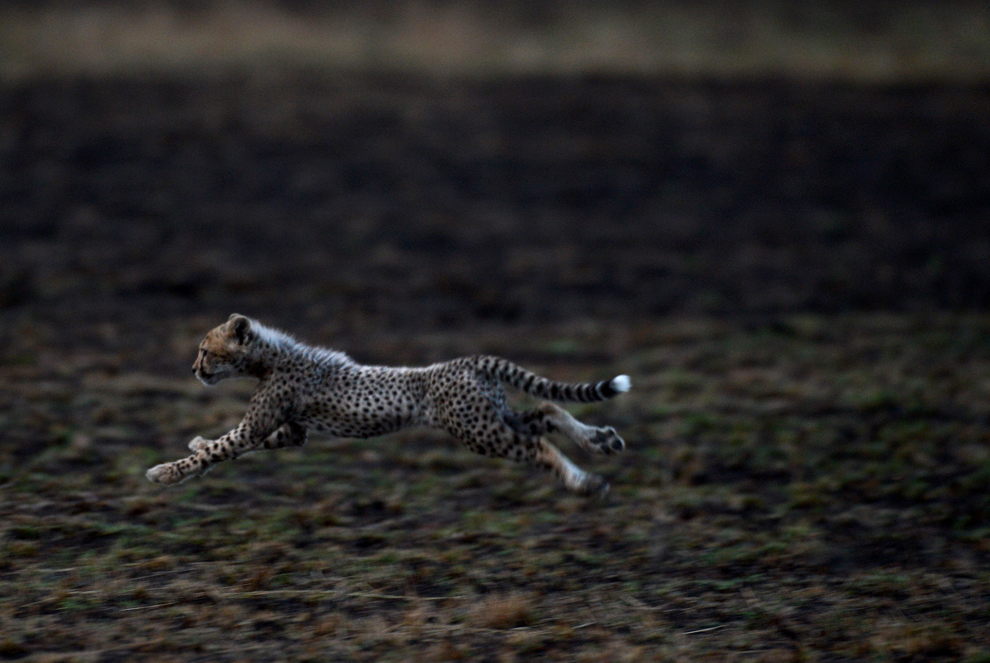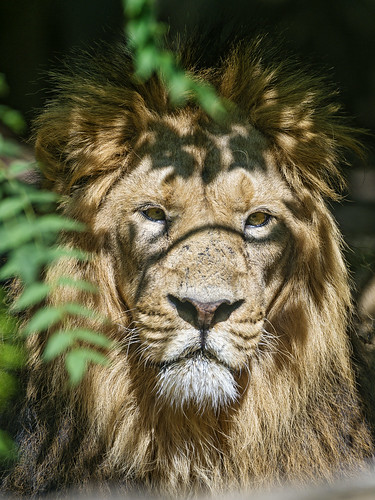It’s a warm winter day in southern California, and busloads of
tourists are pulling into an overlook above Beverly Hills and West
Hollywood. As their guides point out movie studios and the mansions of
stars, Jeff Sikich, a wildlife biologist with the Santa Monica Mountains
National Recreation Area, directs my gaze toward a thin ribbon of woods
in the distance. At least ten months earlier a young male cougar from
the Santa Monica Mountains set out, following that trickle of green
through the vast human hive. After somehow crossing two of the world’s
busiest roads, including the ten-lane Hollywood Freeway, he settled in
at Griffith Park, the huddle of hills rising just behind us,
recognizable worldwide by the giant
HOLLYWOOD sign partway up.
Homing in on signals from a radio collar on the animal, Sikich
leads the way along the famous slope. He pinpoints the cat’s current
location; then we hike on to check sites where it lingered to feed on a
kill. We discover two mule deer carcasses dragged into tangles of scrub
oak and manzanita. Remains of a third lie in a ravine next to the
manicured lawns of a cemetery where deer often graze. We pass dog
walkers, bird-watchers, hikers, joggers, bicyclists, horseback riders,
and scores of graveside mourners. If any know they’re sharing this
landscape with an invisible but potentially deadly predator, they show
no sign of concern.
“There’s only room in our Santa Monica Mountains for ten to
fifteen cougars,” Sikich says. “The average territory of an adult male
there is around 200 square miles. With older, stronger males defending
all the available space, this young one had to leave to claim a home of
its own. Griffith Park takes in less than seven square miles, but our
guy seems to be finding what he needs to survive here.”
L.A.'s Wild Neighbors
For
a year photographer Steve Winter maintained automatic cameras in the
hills of Griffith Park to capture images of the elusive P22, the “ghost
cat” that is the area’s only known cougar. Winter got the shots, along
with others of species that travel the same paths.

Mule Deer, Odocoileus Hemionus
Coyote, Canis Latrans
Bobcat, Lynx Rufus
Human, Homo Sapiens
Think of it: A large carnivore that must kill to eat is meeting
its nutritional needs in the heart of greater L.A., all the while
avoiding attention better than a camera-shy celebrity. How does he do
it? By moving with a whisper-soft tread mostly in the twilight and at
night, sticking close to thick cover, zealously guarding his privacy in a
metropolis renowned as the gateway to fame.
With a range that extends from southern Argentina and Chile to the edge of Canada’s Yukon,
Puma concolor,
the cougar—aka puma, panther, painter, and brown tiger—is the most
widespread large, land-dwelling mammal in the Western Hemisphere, yet
among the least seen. In North America it also goes by the names
catamount, mountain screamer, and mountain lion, though the species is
more closely related to cheetahs and smaller felines than to African
lions or other big cats, and it’s at home in steamy tropical lowlands as
well as among the peaks. North America’s cougars came to be thought of
mainly as mountain dwellers because the highlands offered the last
refuge from settlers’ guns, traps, and poisons, as well as
government-sponsored programs aimed at eradicating predators.
COUGAR COMEBACK
A big cat with a vast
range, the adaptable cougar (Puma concolor) is found across a
variety of habitats. The New World mammal is recognized as six distinct
subspecies (with a possible seventh in Florida). Five inhabit Latin
America. The sixth lives in North America, including in the hills of Los
Angeles, the second most populous city in the United States.

Martin Gamache and Matthew Twombly, NGM Staff
Source: Howard Quigley, Panthera
Cougars once inhabited the lower 48 states from coast to coast,
but by the early 20th century, virtually all the survivors in the U.S.
were confined to the backcountry of the Rockies, Pacific Coast ranges,
and Southwest. (An exception was the subspecies called the Florida
panther, which still holds out in that state’s vast marshes.) Finally
western states dropped the cougar bounties some were still paying as
late as the 1960s. In 1972 federal law banned the use of predator
poisons on federal lands. More wildlife departments started managing the
cats as game animals with a regulated hunting season. And for the first
time in 300 years cougar numbers began to rise. The story ever since
has been about the comeback of a major carnivore—a recovery with broader
reach and larger implications than the better-known and more
controversial return of grizzly bears and wolves.
During the past 40 years cougars have continued to expand
throughout the western United States. They also spilled eastward onto
the Great Plains, establishing new groups in Montana’s Missouri Breaks,
North and South Dakota, and most recently, western Nebraska. In fact a
growing number of confirmed reports—more than 200 since 1990—have
revealed cougars visiting almost every state in the Midwest, along with
Canadian provinces to the north. Like the Griffith Park cat, the
wayfarers are typically young, dispersing males. Very few stay long
before they push on, perhaps in search of a mate, or fall victim to
nervous landowners, local cops, poachers, or traffic. The most dauntless
of the explorers made headlines in 2011 when he was killed by an SUV on
a highway exit in Milford, Connecticut. According to genetic tests this
animal came from the Black Hills of South Dakota via a route estimated
to be more than 2,000 miles long, setting the continent’s distance
record for a journey by four-legged wildlife.
The U.S. Fish and Wildlife Service had just declared the eastern
subspecies of cougar extinct when that South Dakota cat was killed in
Milford. Two years later, in a forested suburb a block from where the
cat died, resident Gary Gianotti told me he had recently spooked another
cougar off his back porch.
“We’ve got a booming deer population around here, as well as wild
turkeys, rabbits, and raccoons,” Gianotti said. “I see cougar tracks all
the time.” Turning on a cell phone, he showed me photos of large feline
paw prints in the snow. “There’s a cougar population breeding in
Connecticut,” Gianotti insisted, referring me to a website filled with
citizens’ accounts of seeing the big cats or their sign. “None of the
agencies want to deal with it.”
Stories of supposedly unmistakable sightings, eerie nighttime
caterwauling, or fresh kills with evidence of a big cat’s signature
choke hold on the throat have persisted generation after generation,
from Maine to the southern Appalachians. Since the 1960s authorities
have received thousands of reports of cougars in the East. As a rule the
accounts they investigate turn out to be any and every creature except a
cougar. Surprisingly, up to a third describe what they saw as a black
panther, despite the fact that no scientist has ever found evidence of a
black cougar anywhere in North America. But not all the eastern cougar
sightings were illusions; experts confirmed well over a hundred. Most
appeared to be animals that escaped from captivity—or were purposefully
set loose. In other cases, though, the cats’ origins remained obscure.
As a species Puma concolor is faring better than any
of the world’s other great cats. How much further cougars will advance
along the comeback trail ultimately depends on where the public is
willing to tolerate them. That in turn hinges on what people believe
these cats are really like.
Cougars have attacked humans on about 145 occasions in the U.S.
and Canada since 1890. Just over 20 of those assaults—an average of one
every six years—proved fatal. Perhaps the more telling statistic is that
at least a third of the verified cougar attacks have taken place over
the past two decades. More cougars plus more people in the countryside
add up to more potential for conflict.
As ambush hunters most active after dark, cougars have never been
easy to get to know. But with technology now able to keep eyes on the
stealthy cats around the clock, much of the mystery shrouding their
lives is evaporating.
Patrick Lendrum is a biologist with the Teton Cougar Project, a
long-running study in Wyoming’s Grand Teton National Park region. At the
project’s field office in Kelly, Lendrum downloads the latest data from
several cougars fitted with satellite radio collars. With a couple of
computer clicks he converts the numbers into dots on a detailed
satellite image of the landscape, which allows him to study the cats’
movements almost in real time. To watch the animals themselves, he
inserts memory cards retrieved from automatic cameras deployed at the
most recent kill sites. Using natural light by day and infrared at
night, the cameras tirelessly collect both photos and video—and all
kinds of surprises.
“Every day around here is a little like Christmas,”
Lendrum says as his computer screen displays two adult males, natural
rivals, each taking a turn feeding on an elk while the other rests a few
yards away. “I’m not sure anybody’s seen that before. Our cougars keep
doing things cougars aren’t supposed to do.”
A female labeled F61 is another prime example. When she and her
siblings were six months old, a cougar mother living nearby was shot,
leaving her three kittens suddenly on their own. The next week, F61’s
mother allowed the orphans to share a kill she and her own kittens were
feeding on. As days passed, the mixed youngsters played and ate together
at times and even groomed one another with rough-tongued licks. This
was the first known kitten adoption in cougar society.
Years later grown-up F61 and a neighboring female, F51, had
kittens at about the same time. (F51’s were sired by one of the original
orphans.) The two families frequently met, shared food, and traveled
together through the spring. Eventually F61 began rearing one of the
other’s young as her own—the second case of adoption.
On my first visit to the Tetons, in November 2012, both females
had new litters. When I returned a few months later, F51 had lost two of
her kittens to wolves. One of F61’s kittens seemed to have met the same
end, judging from the unvarying location of its radio signal. Lendrum
and his supervisor Mark Elbroch snowshoed toward the signal’s source and
came on tracks of the cougar family crisscrossed by wolf trails. There
was blood on the snow and mingled with the mother’s claw marks on a
tree.
Sometime after the wolf attack F61 killed a mule deer, so the
scientists set up remote cameras near the carcass. As expected, the
video footage verified that she had lost a kitten. It also showed an
unexpected addition—an adult male feeding with the family.
“The assumption has been that males and females associate to mate,
period,” Elbroch said. “Yet I’m seeing video after video of adult males
and females sharing a carcass. We’ve had seven cats at once at a kill
site—a male, two females, and four kittens.” He punched up a video of
them. They looked like an American lion pride.
An earlier study in Glacier National Park in Montana found that
wolf packs from Canada that recolonized the area occasionally killed
cougars and often drove them off carcasses. Biologists observed the same
thing happening in Yellowstone National Park after wolves were
reintroduced there in the mid-1990s. Over the following decade packs
began spreading southward into the Teton area, putting cougars there
under more pressure to defend their young and food. Were the cats
responding by becoming more social—“priding up,” as some put it? Or were
they just behaving as cougars have always behaved, only now scientists
have the ability to watch them?
Whether or not wolves are affecting cougar sociality, they are
definitely having an impact on some of the cats’ behaviors. Cougars in
Yellowstone National Park, for instance, used to hunt in open
bottomlands and sagebrush flats. Now they prefer steeper or more heavily
forested areas that offer better cover. And after wolves moved into the
Teton area, the resident cougars made themselves scarce in open
valleys.
“In the 60 or so years that modern wildlife science has been
around, most of the animal communities we’ve studied had no apex
predator,” says Howard Quigley, senior ecologist with the big cat
conservation group Panthera, which oversees the Teton Cougar Project in
partnership with Craighead Beringia South. “Here in the Tetons and in
Yellowstone, grizzlies and cougars survived the nation’s anticarnivore
purges. The addition of wolves amounts to a grand wildlife experiment,
the reconstitution of a complete North American ecosystem. It’s a rare
opportunity to learn how these systems work.”
Cougars are now the most common apex predator across one-third of
the lower 48 states. Most of the other two-thirds lack any big predatory
mammal. So far, anyway, a large cat whose trademark is stealth appears
to be the major carnivore modern society finds easiest to accept, or at
least tolerate. But people still want a clearer understanding of
potential problems. Beyond concerns over personal safety, some suburban
and rural householders fear for their pets, while ranchers and farmers
worry about damage to livestock. But the loudest calls to do something
about cougars tend to come from sportsmen who resent these wild hunters
as direct competitors for hoofed game.
“If you listen to some hunters around here, they’ll tell you
there’s no game left in the woods,” says David Gray, a former game
warden and now mayor of Hill City, South Dakota. When hunters made the
same complaint to state game commissioners at angry public meetings, the
commissioners raised the 2013 cougar quota to 100 out of a total
population estimated at 300—even though the decline of elk and deer was
due mainly to excessive sport hunting.
Wildlife management operates at the intersections of science and
politics, economics and social traditions. Policies regulating the
killing of cougars vary widely from region to region and state to state.
In Texas, for instance, cougars are still classified as varmints; you
can shoot one almost anywhere anytime. California, on the other hand,
has not allowed cougar hunting since 1972 and now has the most cougars
of any state. It also has an abundance of deer and one of the lowest
rates of cougar conflicts with humans. How could that be?
Assuming that every cougar killed means more game for sportsmen,
some states cull as many cats each year as wildlife managers think the
population can withstand. The toll generally falls most heavily on adult
males, which hunters prize as trophies. But as the biggest, strongest
cats, they hold the prime territories and force young upstarts to leave,
setting an upper limit on the number of cougars in a given area.
Studies by Washington State University professor Robert Wielgus
and his co-researchers have shown that when too many large males are
killed, footloose young males converge on the emptied territories.
Fierce competition pushes more of them to the fringes of the space,
often closer to human habitation. Meanwhile, females may roam more
widely to avoid the influx of unfamiliar males, which sometimes kill
kittens.
Wielgus sums up his surprising findings: “Heavy hunting can result in
higher overall density of cougars,
increased predation on game, and
more frequent conflicts with people—in short, the exact opposite of what was intended.”
Rather than ramping up the legal kill, Wielgus prescribes limiting
the take to the cougars’ natural rate of increase, around 14 percent
annually. The state of Washington recently adopted such a policy. Given
the widespread approval this strategy has received from wildlife
biologists, it may set the standard for hunting of cougars—and perhaps
other major predators—making it easier for them to coexist with people.
It seems vital to many people that something big and fierce is out
there wilding the landscape, something that prickles the hair on the
back of the neck and fires the imagination. Scientists think it’s
important too, since most ecosystems developed with large carnivores
playing a pivotal role. In the absence of a major carnivore—and with
sport hunting dropping in popularity—white-tailed deer have become a
danger to drivers, a nuisance for gardeners, and a host for ticks
carrying Lyme disease. Having no predators to cull the weakest and
sickest animals leads to the spread of other parasites and diseases as
well. And as unchecked deer populations overgraze shrubs and sapling
trees, they are slowly but surely transforming portions of North
America’s native forests.
No one is saying that cougars belong in every patch of local
woods. But some are asking why not in state and national forests across
the Great Lakes states, or New York’s Adirondacks, or maybe the Ozark
Plateau—all places cougars have visited in recent years. Where the
cougar will be tomorrow or in ten years is anyone’s guess. But chances
seem very good that it will continue reclaiming lost ground. As Howard
Quigley says, “We’re looking at one of the most successful large
carnivores on the planet.”
Source: Please support National Geographic
Related Photo Gallery Here
Hazardous habitat for cougars
Spreading East Map
Capturing the Elusive Hollywood Cat (Video)
Douglas
Chadwick has reported on wildlife around the world. Steve Winter is
media director for Panthera, a big cat conservation organization.
Society Grant This photographic coverage was funded in part by your Society membership.
National Geographic’s Big Cats Initiative is dedicated to halting the decline of wild felines around the world. To learn more about the projects we support, visit
causeanuproar.org.
Nat Geo WILD presents a week of exotic felines, premiering on Friday, November 29, with
Man v. Cheetah. Check local listings.


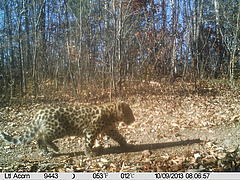 The camera traps, set up by WWF and Feline Research Centre of SFA,
show an Amur leopard with two cubs strolling in the Wangqing National
Nature Reserve, 30 kilometers away from Hunchun. “These are
unprecedented image evidences showing Amur leopard actually breeds in
China,” said Dr. Jiang Guangshun - executive deputy director of the Feline Research Centre of SFA. “This female Amur leopard is with its twin cubs at least, which are 5-months-old.”
The camera traps, set up by WWF and Feline Research Centre of SFA,
show an Amur leopard with two cubs strolling in the Wangqing National
Nature Reserve, 30 kilometers away from Hunchun. “These are
unprecedented image evidences showing Amur leopard actually breeds in
China,” said Dr. Jiang Guangshun - executive deputy director of the Feline Research Centre of SFA. “This female Amur leopard is with its twin cubs at least, which are 5-months-old.” 